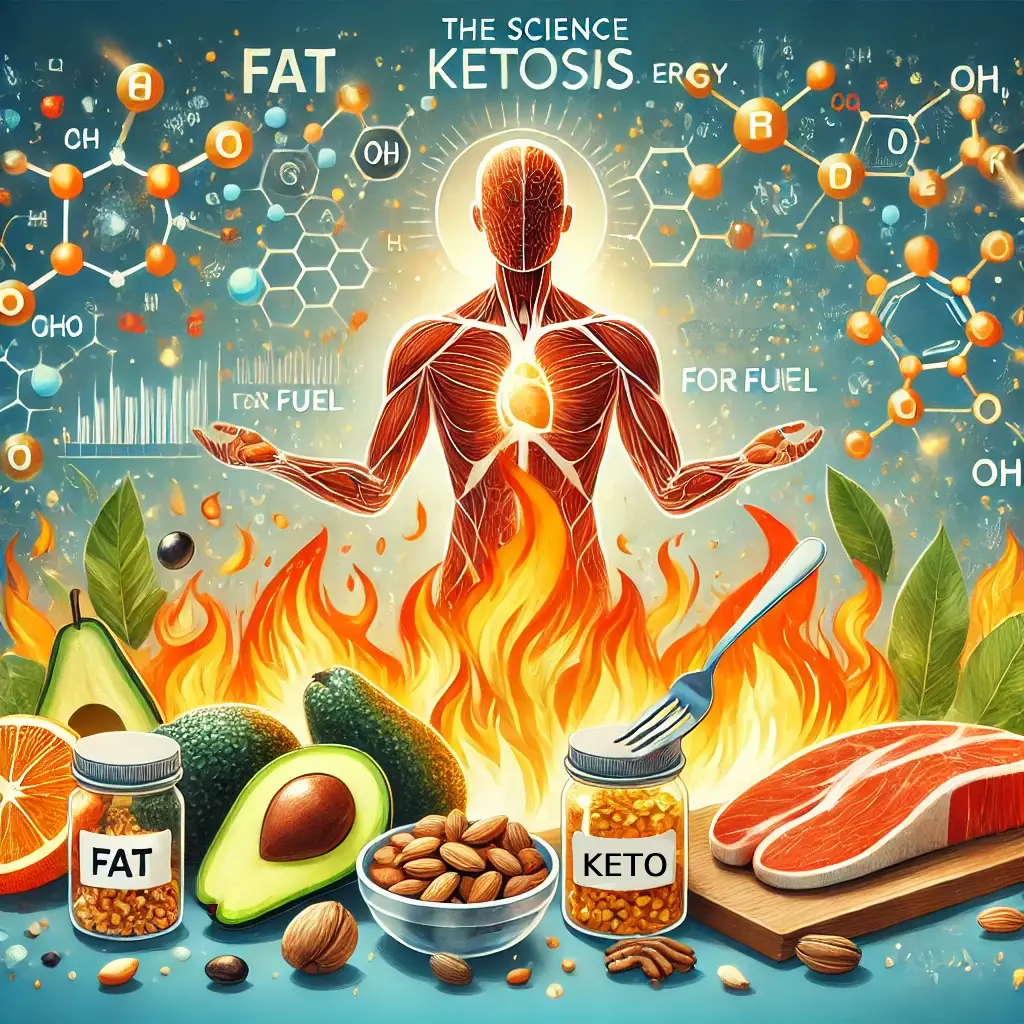The Science Behind Ketosis: How Your Body Burns Fat for Fuel
By Ethan Reynolds, Ketori-La Writer
Ketosis is more than just a trendy diet term; it’s a fascinating metabolic state where your body switches gears, moving from burning carbohydrates for energy to utilizing fats as its primary fuel source. But what exactly happens behind the scenes when you enter ketosis? In this article, we’ll break down the science of ketosis, how it works, and why it’s so effective for fat loss and overall health.
What is Ketosis?
At its core, ketosis is a metabolic state that occurs when the body has limited access to glucose (sugar) — its primary energy source from carbohydrates. Instead of using glucose, your body begins to break down fat stores, converting them into molecules called ketones, which are then used as fuel by your muscles, brain, and other tissues.
The key to triggering ketosis is reducing carbohydrate intake to a minimum, generally between 20-50 grams per day, and increasing fat intake to compensate. This forces your body into a state where it must use fat for energy, as glucose is no longer readily available.
How Does Ketosis Work?
To understand ketosis, let’s break down the process step by step:
- Carb Restriction: When you drastically reduce your carbohydrate intake, your body’s blood sugar (glucose) levels drop. Normally, glucose from carbs is the body’s preferred source of energy.
- Glycogen Depletion: With low carb intake, glycogen (the stored form of glucose in your muscles and liver) becomes depleted. Glycogen is typically the body’s “reserve fuel” that it taps into during short bursts of activity or in between meals.
- Fat Breakdown: Once glycogen is depleted, the body turns to its next energy source: fat. Fat cells are broken down in the liver, where fatty acids are converted into ketones through a process called ketogenesis.
- Ketones for Energy: Ketones, particularly beta-hydroxybutyrate (BHB), acetoacetate, and acetone, are the primary molecules used during ketosis. Your organs and brain begin using these ketones for energy, allowing the body to function efficiently without carbs.
Why Does Ketosis Lead to Fat Loss?
The reason ketosis is so popular for fat loss boils down to energy efficiency and hunger regulation. Here’s why:
- Increased Fat Burning: When in ketosis, your body is actively burning fat stores to create ketones, which directly fuels energy needs. This is a powerful mechanism for fat loss since you’re using stored body fat rather than incoming carbohydrates.
- Appetite Suppression: Ketosis naturally suppresses hunger hormones like ghrelin, making it easier for individuals to stick to their caloric intake goals without feeling hungry.
- Preserved Muscle Mass: Unlike crash diets that might burn muscle along with fat, a ketogenic diet helps preserve lean body mass. Ketones are muscle-sparing, meaning that your body prefers to use fat for fuel, protecting muscle tissue in the process.
The Health Benefits of Ketosis Beyond Fat Loss
While fat loss may be the most immediate benefit, ketosis provides a range of additional health advantages:
- Enhanced Mental Clarity and Focus: The brain thrives on ketones, which can lead to improved cognitive function, sharper focus, and better mental clarity. Many people on ketogenic diets report feeling more alert and productive.
- Improved Insulin Sensitivity: Ketosis can help balance insulin levels, reducing insulin resistance and the risk of type 2 diabetes.
- Sustained Energy Levels: Fat is a much more stable and long-lasting energy source than carbohydrates, leading to steady energy throughout the day.
- Reduced Inflammation: Emerging research shows that ketogenic diets may help reduce inflammation, potentially lowering the risk of chronic diseases like heart disease, Alzheimer’s, and some forms of cancer.
How Long Does It Take to Enter Ketosis?
The time it takes to enter ketosis varies based on your metabolism and activity levels, but for most people, it happens within 2 to 4 days of significantly reducing carbohydrates. Factors that affect how quickly you can achieve ketosis include:
- Carb Restriction: The stricter you are with your carb intake, the faster you’ll enter ketosis.
- Exercise: Physical activity can help deplete glycogen stores faster, speeding up the process.
- Fasting: Some people achieve ketosis more quickly through intermittent fasting, which further reduces glucose availability.
Conclusion: Is Ketosis Right for You?
Ketosis is a powerful metabolic state that promotes fat burning, stabilizes energy, and enhances mental clarity. While it may not be suitable for everyone, particularly those with certain health conditions, it offers substantial benefits for fat loss and metabolic health when followed correctly.
If you’re looking to harness the power of ketosis, start by reducing your carb intake, increasing healthy fats, and being mindful of your body’s energy needs. With time, you’ll see why ketosis has become such a popular strategy for those seeking long-term health and weight loss.



